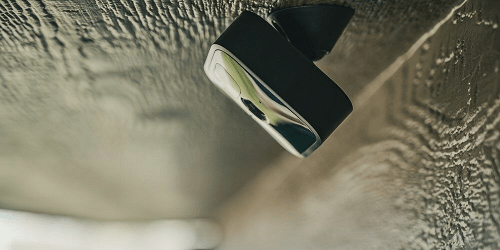
11.12.21- SSI – Scott Goldfine
While the emergence of this new sector has caused some market erosion, it has also brought fresh benefits and opportunities to professional full-service installation and monitored service businesses.
Anyone still dismissing the significance and potential threat of the do-it-yourself (DIY) residential and small business security system model might want to hang up their buggy whip, junk their dot matrix printer and cut up their Blockbuster card. It’s time to wake up and smell the competitive coffee. Then, take a robust swig of that frothy brew because it turns out there is a silver lining.
While the emergence of this new sector has caused some market erosion, it has also brought fresh benefits and opportunities to professional full-service installation and monitored service businesses.
First of all, many of the DIY companies have engaged in conspicuous marketing that has served to raise overall awareness of security and the latest technologies among the buying consumer public. That is a positive.
Second, most of the people DIY attracts are either unlikely to buy a pro system regardless (helping weed out dead-end prospects) or their purchase acts as a gateway to an eventual pro system and/or pro monitoring.
Third, speaking of pro monitoring, another plus is many DIY systems are interested in those services. That brings us to the final boon, which is adopting the if you can’t beat ’em, join ’em mentality (or maybe it’s the keep your friends close and your enemies closer concept) in which professional providers also offer one or more flavors of DIY.
That is either selling basic DIY systems (sometimes custom-branded) online or a hybrid version in which the professional company guides the customer in the installation process. This has been referred to by names like do it with me (DIWM), do it together (DIT) or do it for me (DIFM) … how about we do away with the acronym madness?!
The foam on that latte is being able to tack pro monitoring RMR onto any of these varieties. Best of all, that customer’s security relationship exists entirely with your company, leaving pure-play DIYers out of the mix.
Furthermore, it behooves the entire industry and consumer public alike to keep professional companies that truly understand the gravity of security and life safety as well as know its best practices and nuances. Keeping pros in the loop better ensures people’s well-being and decreases the incidence of false alarms that can squander valuable and limited first responder resources.
In particular, those companies that dove in or at least dipped their toes into DIY before the pandemic struck found themselves in an eminently stronger position than those who had shunned the already mounting trend. During the past 20 months, especially most of 2020, homeowners have preferred not to have to deal with installation or service people coming onto their property.
In addition, spending more time at home due to workplace closures has led to people becoming more dialed-in where smart home technology is concerned — including security.
A great example of one such progressive professional provider is this month’s cover subject: Southern California’s Post Alarm. As it so happens, after more than 60 years in business, the company’s management decided to launch a brand refresh that included the introduction of a DIY option.
Little did they realize that just one week later the COVID-19 lockdown wrench would be thrown into the works. Considering the timing and circumstances, the firm’s president, Rob Post, told me that adding DIY was “a blessing from God,” and that it “sets us up for the future.”
DIY’s impact is also one of the most striking findings seen in the 2021 Home Automation Deep Dive (jointly conducted by SSI and Parks Associates). The percentage of homeowners whose security systems were self-installed has doubled since 2017, reaching an all-time high of 55% in 2020.
One of the other biggest shifts in the residential market has been the interest in video surveillance, and the data depicts growth in cameras, video doorbells, video verification, interactive services and the home networks that support it all.
Today, we all have to be receptive and adaptive to technological change. It was eye-opening sitting in on Amazon’s 2021 Devices & Services update last month. The WOW factor came with the demonstration of the Ring Always Home Cam, a small video surveillance drone that rests in a box until a user remotely activates it to view any area within a residence.
The knockout blow was Astro, a robot that can freely roam a home, being remotely accessed, and incorporates a telescoping surveillance camera. Amazon projects most U.S. homes will have at least one robot within five to 10 years. The future is now people.
